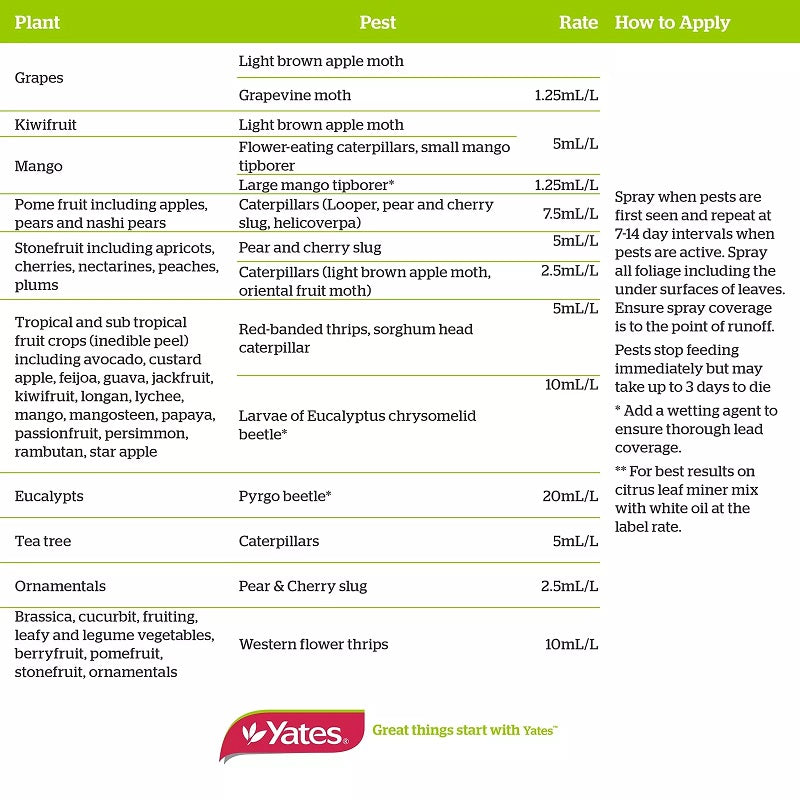





200ml
Contains spinetoram, a new generation insecticide derived from beneficial soil bacteria for control of caterpillars, thrips, codling moth, pear & cherry slug and other leaf eating insects. This is the next generation solution replacing Success Naturalyte, Success ULTRA. The spinetoram has translaminar action, which enables it to move from the upper to lower leaf surfaces, helping to make it rainfast.
Features:
- Yates Success Ultra is suitable for use on a wide range of vegetables, fruit, herbs and ornamentals
Makes up to 40L of spray for vegies
How to Use:
- Shake well before use. Measure out required amount of Success Ultra and mix with water. Apply in the cool of the early morning or late evening.
Application:
- Spray when pests are first seen and repeat at 7-14 day intervals when pests are active. Spray all foliage including the under surfaces of leaves. Ensure spray coverage is to the point of runoff.
How it Works:
- The active is absorbed by by both contact on the insect and ingestion.
Precautions:
- DO NOT spray when shade temperatures are near 28°C or higher, or when plants are suffering from moisture stress
- Avoid spraying in windy conditions or if rain is expected with 6 hours
Pests stop feeding immediately, but may take up to 3 days to die.
Withholding Periods:
- Bananas, subtropical & tropical fruit: none,
- Coffee, grapes, Kiwifruit, pome fruit: 7 days,
- Brassicas, cucurbits, culinary herbs, leafy vegies, legumes, root & tuber veg, stone fruit: 3 days,
- Berry fruit, citrus, fruiting veg, stalk & stem veg: 1 day
CAUTION:
DO NOT allow children or pets into sprayed areas until spray has dried. Highly toxic to bees. DO NOT spray if bees are feeding on flowering plants. Toxic to fish. DO NOT allow chemical containers to get into drains, sewers, streams or ponds.
Storage & Disposal:
- Store in the closed, original container in a cool, dry place, out of reach of children. DO NOT store in direct sunlight. Dispose of empty container by wrapping in paper, placing in plastic bag and putting in garbage.
Safety Directions:
- Will irritate the eyes. Avoid contact with eyes. Wash hands after use.
First Aid:
- If poisoning occurs, contact a doctor or Poisons Information Centre. Phone Australia 131126.






